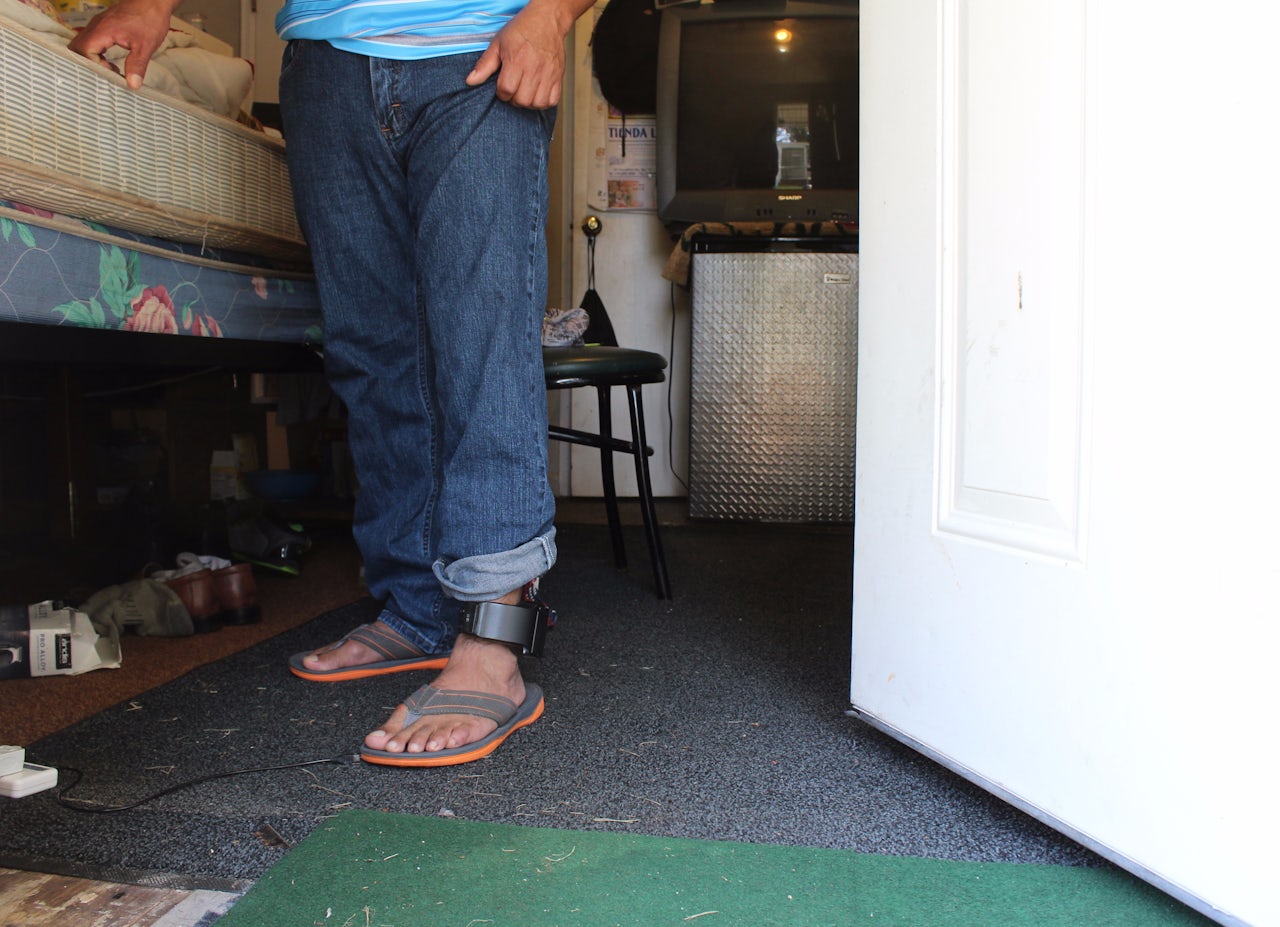Brenda Menjivar Guarado tried to get residence in the United States lawfully. She didn’t have a visa or green card, but she entered the U.S. through the border town of Hidalgo and applied for asylum. Menjivar Guarado was then transferred to the T. Don Hutto Residential Center, a private detention facility in Taylor, Texas. Upon arrival, guards took away her insulin and began giving her different, less effective treatment for her Type 1 diabetes. Menjivar Guarado fled El Salvador because she feared for her life there (for safety reasons, her attorney declined to disclose why she applied for asylum, but hundreds of Salvadorans come to the U.S. fleeing gang violence each year), but her fear of death became more imminent in Hutto, where her health continued to deteriorate. After a month in detention, Rewire reported, she chose to give up her asylum case and return home.
Under the Refugee Act of 1980, the U.S. provides asylum to people who fear persecution, torture, or murder if they return to their home countries. Between 1996 and 2015, 590,517 people have been granted asylum. But as part of a broader crackdown on immigration, asylum seekers are increasingly spending time in jail while waiting for their cases to be heard. The same judges handle all immigration cases, regardless of whether the issue is a request for asylum, an application for specialized non-immigrant visas, or an attempt to fight deportation. That means that the increase in ICE arrests that started under Obama and has been supercharged by Trump has contributed to a backlog of cases waiting to get in front of a judge. Many of those people must wait out the period in a detention center (or, in some cases, at large but shackled with an ankle monitor). It’s now almost guaranteed that if a migrant comes to the U.S. border and asks for asylum, they will have to wait in jail before their case is even heard. The average wait time before an immigration case is decided is three years — for an increasing number of asylum seekers, that entire time is spent behind bars. There were 44,270 asylum seekers in detention in 2014, according to DHS statistics, the most recent year for which statistics are available. It's likely that the number of detained asylum seekers has gone up since then, along with the general increase in immigrant detainees.
We talked about asylum detention in border states on our daily podcast, The Outline World Dispatch.
The response to this trend from the government has been to set up more detention centers, to house both asylum seekers and immigrants arrested by ICE. The agency already detains about 400,000 immigrants each year in more than 200 facilities across the country, including county jails and private detention centers, but this week, USA Today reported that Immigration and Customs Enforcement plans on subcontracting four new private detention facilities across the country, each of which will hold about 1,000 people. Though the Trump administration’s immigration rhetoric has mostly focused on arresting so-called “criminal aliens” already in the country, these facilities will also house asylum seekers like Menjivar Guarado.
This seems to be exactly in line with the goals laid out by Trump, who has explicitly targeted refugees in addition to the proverbial “illegal aliens” that members of his base believe are stealing their jobs. Prolonged stays in detention centers lead to more people giving up and accepting a ride back to the border, regardless of the merits of their claim, said Melissa Lopez, executive director of Diocesan Migrant & Refugee Services in El Paso, Texas. That “self-deportation” trend includes asylum seekers, she said. “Many of them haven’t been in jail before,” said Lopez. “They don’t understand why they’re being detained, especially for someone fleeing violence. They’re coming here seeking protection and then they get put in jail.”
In 2012, almost all asylum seekers who passed their credible fear screening, in which an official from United States Citizenship and Immigration Services determines whether the migrant has a credible fear of persecution in their home country, were released. By 2015, only 47 percent of asylum seekers who passed their credible fear screenings were granted parole.
Being trapped in detention hurts an asylum seeker’s chances of finding an attorney and, as a result, being granted asylum. Since immigration cases are handled by civil courts, asylum seekers and immigrants in deportation proceedings don’t have free, government-appointed attorneys. Instead, they have to find pro bono representation or pay for a lawyer out-of-pocket. ACLU staff attorney Michael Tan told The Outline being detained has a “devastating” effect on immigrants’ ability to find legal representation.
Even if a detained immigrant manages to get a lawyer, the fact that they are incarcerated makes it harder for them to build a case. Many detention centers are hundreds of miles from major cities, Tan said. “From a lawyer’s perspective, it’s very hard to represent people in detention, because detention centers are so inaccessible,” he told The Outline. “There have been many studies showing that the two most important determinants of what happens in your deportation case are whether you have a lawyer and whether you’re detained.”
Both Tan and Lopez said that ICE often transfers detainees to different facilities with little notice or explanation, which makes it even more difficult to work with their lawyers. Tan has represented immigrants in New York and New Jersey facilities who have been suddenly transferred to “Alabama, or Georgia, or Louisiana,” he said. Since immigration law is handled in federal courts, there’s nothing legally prohibiting a lawyer in New York from representing a client who’s detained halfway across the country, but representing an asylum seeker who gets transferred to an inaccessible location can be an insurmountable hurdle. “A good lawyer is working closely with their client to gather evidence, to help them get ready to testify in court, working with the family members, working with experts,” Tan said. ”You need to be able to access your client.”
Detaining asylum seekers is just another form of deterring immigrants from trying to come to the U.S., legally or otherwise.
Different circuits also have different standards for immigration decisions, leading to a disparity in asylum case outcome that largely depends on region. “Some circuits — especially down in Texas, for example — are far more favorable to the government when it comes to immigration matters,” Tan said, “so it ends up being a way, intentionally or not, that the government can stack the deck against the immigrants.” (ICE spokesperson Sarah Rodriguez said in a statement that the agency “routinely transfers detainees to other detention facilities based on available resources and the needs of the agency.”)
In recent years, an increasing number of asylum seekers have attempted to represent themselves in court, usually to their own detriment. The Transactional Records Access Clearinghouse, a research center at Syracuse University, found that in 2016, 20 percent of the more than 22,000 asylum seekers whose cases were decided that year tried to fight their cases without an attorney. Of the asylum seekers who did have a lawyer, 52 percent were eventually granted asylum. By contrast, of those who didn’t have a lawyer, only 10 percent got asylum.
Little hope exists for relief under President Trump, who has made it clear that his goal is to reduce the number of non-citizens who reside in the U.S., full stop (unless their residence is a detention center). In September, Politico reported that Trump would cap the number of refugees allowed to enter the U.S. at 45,000, the lowest level in decades. The president has expressed support for a bill that would slash legal immigration in half over the next decade, and he’s still working on securing government funding for his border wall. Detaining asylum seekers is just another form of deterring immigrants from trying to come to the U.S., legally or otherwise.
The one bright spot for asylum seekers and other would-be immigrants and their families is Jennings v. Rodriguez, a class-action lawsuit on behalf of detained immigrants that has made its way to the Supreme Court. Earlier this month, the justices heard arguments about whether immigrants who are determined not to be a flight risk or threat to public safety have the right to a parole hearing after six months, and a ruling is expected later this year. Unsurprisingly, the attorney representing the Trump administration is arguing that detained asylum seekers have no constitutional rights, because they haven’t technically entered the U.S. even though they're incarcerated in the country. It's unclear whether Menjivar Guarado would have eventually been granted asylum, but it appears that the federal government isn't interested in finding out.


